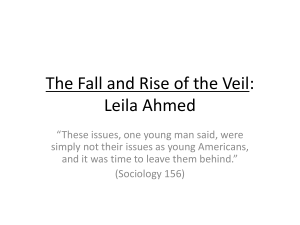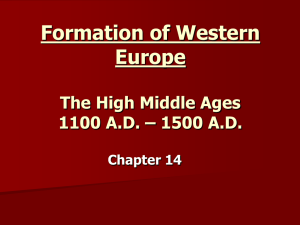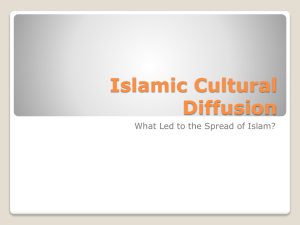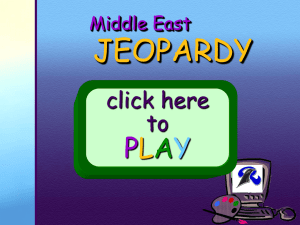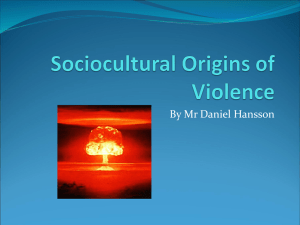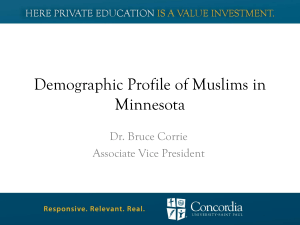Post-9/11 Backlash - Millersville University
advertisement
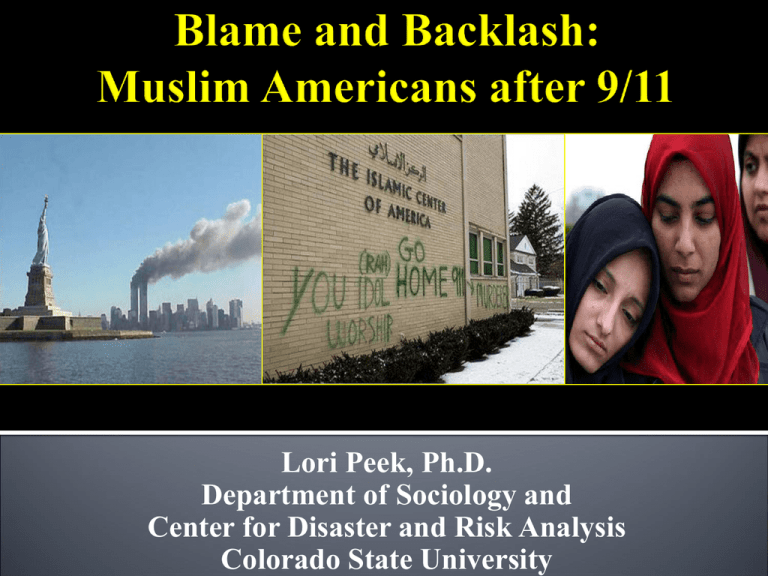
Lori Peek, Ph.D. Department of Sociology and Center for Disaster and Risk Analysis Colorado State University A desire to help A desire to help A desire to give A desire to help A desire to give A surge in patriotism A desire to help A desire to give A surge in patriotism A need to grieve A need to stand together in solidarity 1. Any sudden or violent reaction; specifically, a strong political or social reaction resulting from fear or resentment of a movement, candidate, ethnic group, etc. 2. An excessive and adverse societal and governmental reaction to a political or ideological crisis against a group or groups. Scapegoating (stereotypes, prejudice, discrimination) Hate Crimes, Bias Incidents State/Government Policies Unprecedented surge in anti-Muslim bias in the U.S. 600 481 Hate Crimes 500 400 300 200 155 149 156 128 156 115 105 100 29 27 28 21 32 28 0 1995 1996 1997 1998 1999 2000 2001 2002 2003 2004 2005 2006 2007 2008 Year Source: FBI Uniform Crime Report 1600 1,501 Hate Crimes 1400 1200 1000 800 600 400 354 200 0 2000 2001 Year Source: FBI Uniform Crime Report 3,000 2,728 2,652 2,467 Incidents 2,500 1,972 2,000 1,717 1,522 1,500 1,019 1,000 500 216 80 366 240 284 285 322 525 602 0 Year Source: Council on American-Islamic Relations Why does backlash occur after certain crises, but not after others? Why are only some individuals and groups singled out for mistreatment, while others are left alone? What can the public and political response to 9/11 teach us about the processes that set blame assignment and backlash into motion? Post-9/11 Backlash Intentional Acts of Mass Violence Post-9/11 Backlash Intentional Acts of Mass Violence Post-9/11 Backlash • 2,973 dead Intentional Acts of Mass Violence • Thousands injured • Widespread psychological trauma Magnitude of Losses Endured • $80-$100 billion financial losses • 75,000- 100,000 jobs lost Post-9/11 Backlash Intentional Acts of Mass Violence Pre-9/11 Anti-Muslim Social and Political Context Magnitude of Losses Endured Post-9/11 Backlash Persistently negative media representations Persistently negative media representations Persistently negative media representations Actual global increase in terrorist violence Persistently negative media representations Actual global increase in terrorist violence Conflict in the Middle East Intentional Acts of Mass Violence Pre-9/11 Anti-Muslim Social and Political Context Magnitude of Losses Endured Muslims as Dangerous and Threatening Outsiders Post-9/11 Backlash 34% of Americans believe that Islam encourages violence Intentional Acts of Mass Violence Pre-9/11 Anti-Muslim Social and Political Context Magnitude of Losses Endured Muslims as Dangerous and Threatening Outsiders Post-9/11 Backlash Nearly 60% of Americans believe that Muslims are prone to violent extremism 39% of Americans admit to feeling “some prejudice” against Muslims 22% of Americans would not want Muslims as neighbors Intentional Acts of Mass Violence Pre-9/11 Anti-Muslim Social and Political Context Magnitude of Losses Endured Muslims as Dangerous and Threatening Outsiders Post-9/11 Backlash Identifiability of the Muslim Population Intentional Acts of Mass Violence Pre-9/11 Anti-Muslim Social and Political Context Relative Powerlessness of Muslims Magnitude of Losses Endured Muslims as Dangerous and Threatening Outsiders Post-9/11 Backlash Identifiability of the Muslim Population Intentional Acts of Mass Violence Pre-9/11 Anti-Muslim Social and Political Context Relative Powerlessness of Muslims Magnitude of Losses Endured Muslims as Dangerous and Threatening Outsiders Post-9/11 Backlash Identifiability of the Muslim Population Intentional Acts of Mass Violence Pre-9/11 Anti-Muslim Social and Political Context Relative Powerlessness of Muslims Magnitude of Losses Endured Muslims as Dangerous and Threatening Outsiders Post-9/11 Backlash Identifiability of the Muslim Population Gallup Polls of Americans: % who have a negative view of Islam 14% (2001) 34% (2002) 46% (2006) 53% (2009) Lori Peek 970-491-6777 Lori.Peek@colostate.edu

